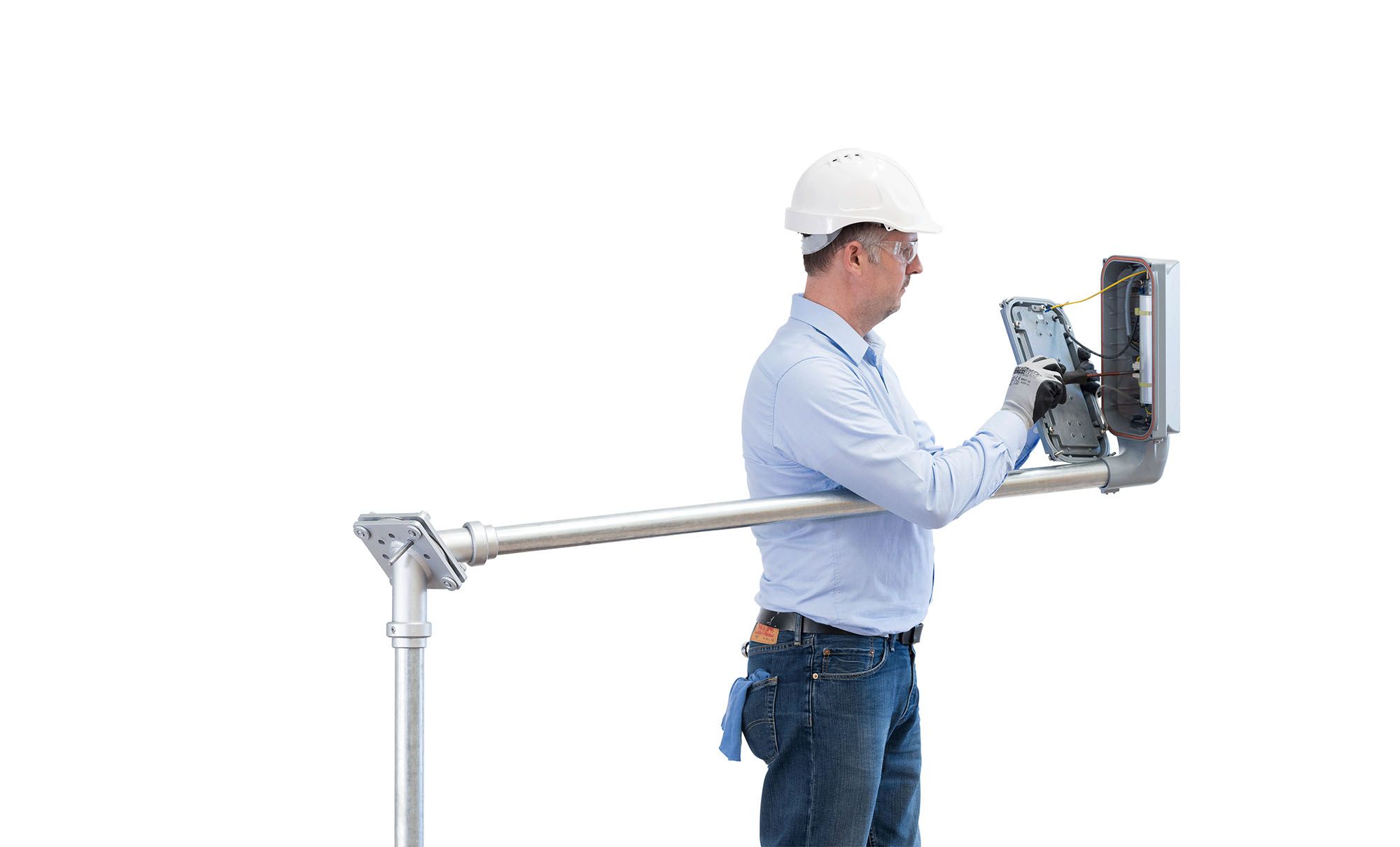For any safety hazard, whether physical, chemical or mechanical, there are often several options from which to choose. Three main methods to control hazards are:
- Administrative controls that dictate specific ways a potentially hazardous task is done. This usually will require additional worker training and supervision.
- Personal Protective Equipment or PPE. The PPE itself can often present some potential hazards to the worker and require constant monitoring of worker condition and equipment suitability. For example, fall protection equipment, such as harnesses, lanyards and D-rings, require both monthly inspections and pre- and post-use inspections to identify damage and wear. Damaged or worn components must be taken out of service immediately. Replacement is usually necessary. If repair is possible, certified vendors must do the work.
- Elimination of the hazard by replacement or substitution. This method is best used for dangerous or toxic chemicals and liquids.
However, there is a fourth option that should be considered carefully.
Engineering controls effectively reduce hazards
More reliable than administrative controls and PPE solutions, engineering controls have many advantages.
If designed into new and remodeled construction or processes, engineering controls are very cost effective. In most instances, expenses incurred during installation are minimal. Some engineering controls can save time and money during their lifetime because of reduced maintenance costs.
However, there are cases when choosing the incorrect control adds significantly to both installation costs, and ongoing use and maintenance charges. For example, there are several options to remove maintenance hazards from outdoor pole lighting.
For standard lighting on elevated platforms and catwalks, and for material handling conveyors, the usual heights are 8, 10 and 13 feet (2400, 3000 or 4000mm) from walk surface. Luminaires or fixtures designed for these heights are standardized for optimal candlepower or lumen output.
However, maintaining these fixtures requires the use of equipment to raise the worker to the height of the unit. In many cases, PPE must also be employed to protect the maintenance technician from injury as a result of falling.
Even so, there are engineering options that eliminate the hazard without costly PPE or additional equipment.
Bring the fixture to the worker… not the worker to the fixture
There are two, simple methods to bring the lighting fixture to the worker without additional safety equipment. Both methods can be included in the initial design and construction of a facility. And they can also be installed as conversions after the fact.
The first method is to shorten the pole height. For example, by using a 6- or 7-foot (1800–2100mm) pole, the fixture is brought into reach of most maintenance and repair technicians. The luminaire can be serviced without the need for ladders, fall protection gear or other equipment necessary to raise the worker.
However, this method presents several major concerns.
First, since light output does not fall straight down but in either a conical circle or rectangle, the effective area a single fixture illuminates is reduced. To illuminate the same area, installing additional fixtures is necessary. This not only adds to the cost of installation, but to the energy consumption of the system.
Secondly, this arrangement, while safer, could have significant ergonomic ramifications as well.
Even with the fixture lowered within reach, the maintainer must work with arms raised, hands above the head. This position places stress on the arms, shoulder joints and muscles, and on the neck and back muscles.
A final consideration is that the lower lighting fixtures can cause glare points, hampering workers’ vision in some cases.
A better way to “lowering the lights”
Instead of installing shorter lighting poles, and more of them, use a pole that is the correct height for optimal illumination. The improved pole, which can be installed as an OEM item, actually lowers the fixture to a comfortable, safe and ergonomic height for repair.
This type of solution employs a 45⁰ clutch-style swivelling joint. One technician can lower the pole easily, eliminating the need for additional workers. Ladder, fall protection/arrest systems, scaffolding or other lifting devices are not needed. The benefits of this type of system are enhanced safety, lower maintenance costs and a rise in overall efficiency.
Here’s how it works.
The fixture is lowered to a height somewhere between the worker’s hip and lower chest. This means that repair and maintenance work is done with arms down, slightly extended forward and with the hands working on a level plane. This is the recommended position for a safe, ergonomically sound workstation, according to most ergonomics standards.
The strain on the shoulders, neck and back are removed, allowing the technician to perform maintenance and repair comfortably, efficiently and more easily. To see this type of safe, easy to use system in action, click here for a short video.
While using this solution as part of a new construction or design is favorable, conversion kits can be used to upgrade the existing lighting support to the safer, more ergonomic design.
Carefully think through any hazard abatement design
As can be seen by this simple example, the benefits and potential consequences of any hazardous work reduction must be carefully thought out.
All aspects of the proposed change should be carefully evaluated. It’s possible that while the change does solve the unsafe condition, it may still cause others that need to be resolved.
Find the solution that makes the task safer, more efficient and cost effective. When you do, you have found the best possible choice.
The Swivelpole™ lowering pole solution is recognised globally for providing simple, fast and affordable access to light fixtures and equipment. The innovative access solutions eliminate the risk of working at heights, through the controlled lowering of light fixtures and equipment to a safe and comfortable working position.
Maxis™ is the next generation lowering pole solution for safely accessing light fixtures and equipment.
